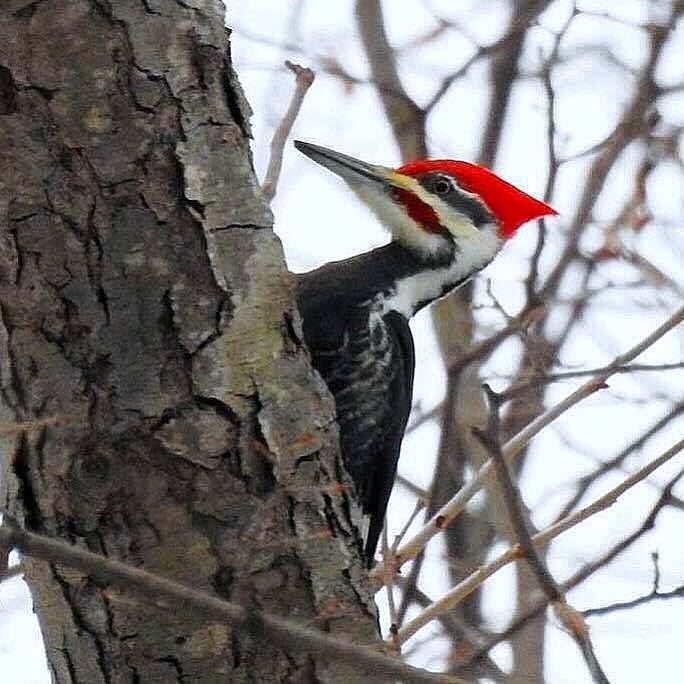Distinctive, Reclusive Pileated Woodpecker Seen at Swan Creek

Story by Chelsea Gailhouse; photo by Richard Parrish.
A showy woodpecker photographed this week at Swan Creek Preserve is a showstopper, on those rare occasions that you get a glimpse of the crow-sized, red-crested bird.
Pileateds are residents of Ohio, but rarely seen. Photographer Richard Parrish captured the photo above this week.
The pileated – think “Woody Woodpecker” – is easily recognizable because it is significantly bigger than other resident woodpeckers. Their bodies can range in size from about 16 to 19 inches and their wingspan is 26 to 30 inches. It is a striking bird, with black with white stripes running down its neck from its face and a “hat” of brilliant red. (The trademark crest is where it gets its name).
Female pileateds differ from the male, with not quite as much red on her face. She has a black forehead while the male’s red crest stretches all the way from his beak to the back of his head. You might notice a little red on the side of the male’s face as well.
Look for this large woodpecker in mature forests with at least some large trees to support their need for nests and food.
The pileated is sometimes easier to hear than it is to see. Listen for the drumming it makes as it forages on dead trees for insects. It also has a distinctive, clear, loud call that sounds something like “Wuk Wuk Wuk,” that fluctuates in pitch and pace. Some even say it sounds like a jungle call, something like monkeys.
If you’re not sure if what you heard was in fact a pileated, look for other evidence. The woodpecker characteristically makes very impressive rectangular holes 3 to 6 six inches in diameter in dead trees as it’s looking for its meal of carpenter ants and other insects. Some of their excavations can even destroy small dead trees. The holes they leave make great homes for other cavity-nesting animals, including bats, ducks and owls.
They typically nest in very large, dead trees about 15 to 20 feet above the ground, with the male doing most of the construction work. Look for an oblong hole about 3.5 inches in diameter. They rarely will reuse their nest, typically rebuilding each year. When their cavity is complete, they finish building their nest with only a few leftover woodchips from the construction process.
How You Can See Them
A large number of dead ash trees – victims of the invasive emerald ash borer – has increased habitat for pileated woodpeckers. Look for them at Pearson, Secor and Oak Openings Preserve.
Every Wednesday at noon, join an expert birder at Swan Creek Preserve to identify and track birds seen in the Window on Wildlife, located at the park’s Airport Highway entrance.
Or, use a suet feeder in your own backyard to attract this and other woodpeckers.
Good luck and happy birding!